
What’s Progressive Overload & How Should You Do It?
Progressive overload is one of the foundational principles of both strength training and hypertrophy training. When you lift a challenging amount of weight, you provoke muscle growth, making your muscles stronger. To continue challenging your growing muscles, you’ll need to lift gradually heavier weights.
- To get stronger, lift more weight.
- To lift more weight, get stronger.
It’s one of those chicken-and-egg riddles, but both chicken and eggs are good for building muscle, so that’s perfectly fine. Speaking of which, you also need to progressively overload your calories to continue building muscle.
In this article, we’ll teach you how to use progressive overload to stimulate muscle growth with your workouts and fuel muscle growth with your diet.
- The Tragedy of Milo of Croton
- What is Progressive Overload?
- The Different Types of Progressive Overload
- How to Use Progressive Overload
- Overload the Muscles You Want to Grow
- How to Track Your Progress
- How Often Should You Make Progress?
- How Not to Get Hurt
- Progressive Overload for Muscle Size vs Strength
- The Importance of Eating & Resting Enough
- Progressively Overloading Calories
- Summary
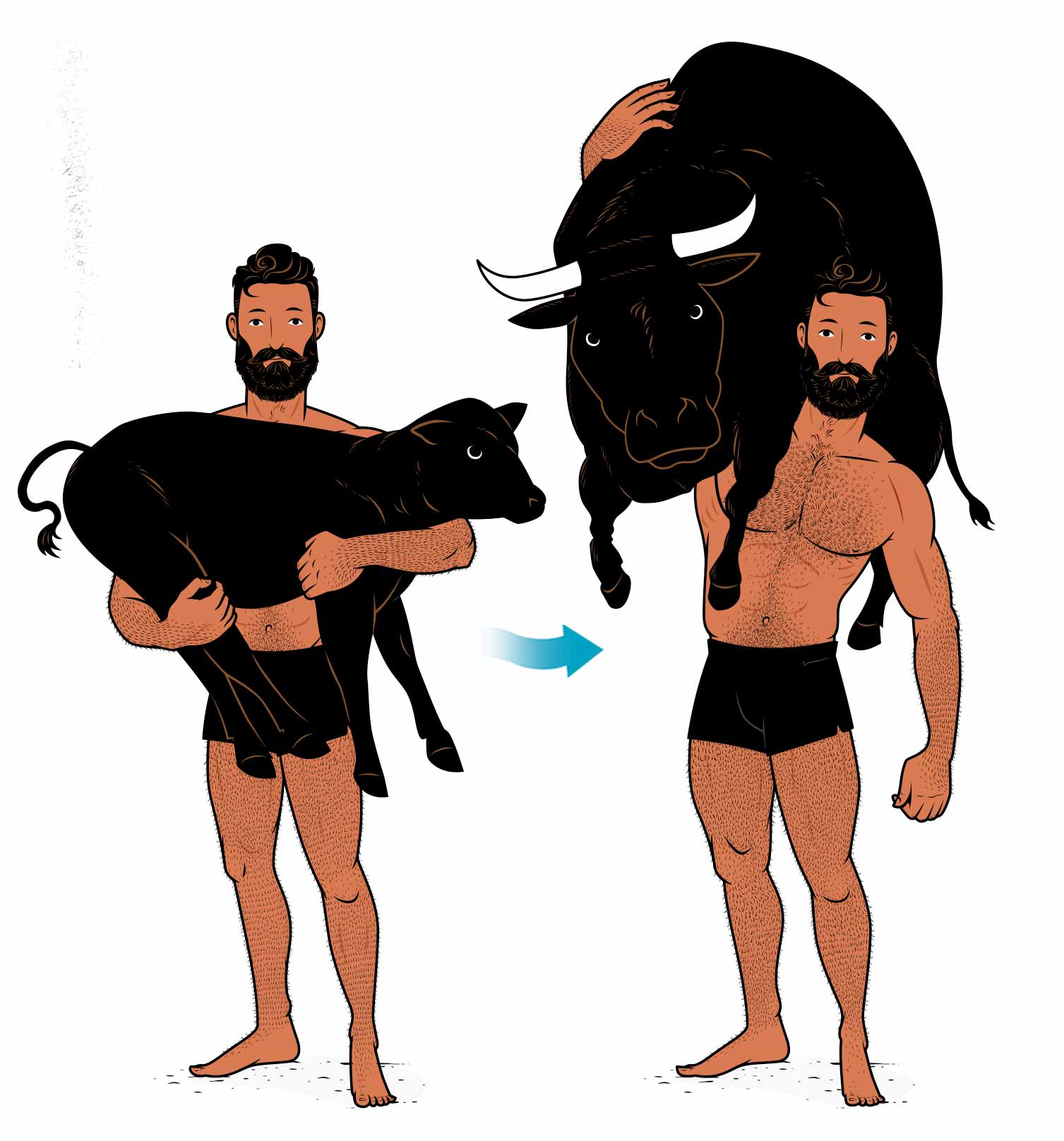
The Tragedy of Milo of Croton
A long time ago, in a land far away (unless you live in Greece), there was a wrestler named Milo of Croton. Most historians believe he really existed. You can read his legend here.
Milo was thin but determined to become strong, and he had a plan for how to do it. Every second morning, he would carry a calf up the hill.
On the first day, the calf only weighed sixty pounds, but Milo was still a beginner, and that was enough to challenge his small muscles. When he got to the top of the hill, his upper back was beginning to round, his traps were burning, and his biceps were shaking like a palm tree in a hurricane. When Milo set the calf down, he collapsed on the ground, breathing fast and hard. When he stopped feeling nauseous, he went home, ate all the food he could find, and then went to bed early.
Two days later, his muscles had grown ever-so-slightly bigger. He dragged his aching body out of bed, returned to the hills, and carried the calf up the hill again. Milo’s muscles were bigger, but so was the calf. It had gained two pounds. When he reached the top of the hill, his muscles weren’t shaking anymore, but he was just as spent as before. He collapsed on his back again, hyperventilating.
Every two days, Milo used his bigger muscles to carry the growing calf. The trek up the hill never got easier, but his spine stopped rounding, his biceps stopped quivering, and he stopped feeling so sore afterwards. Over the next two years, the calf grew into a bull, and Milo became the strongest man in Greece.
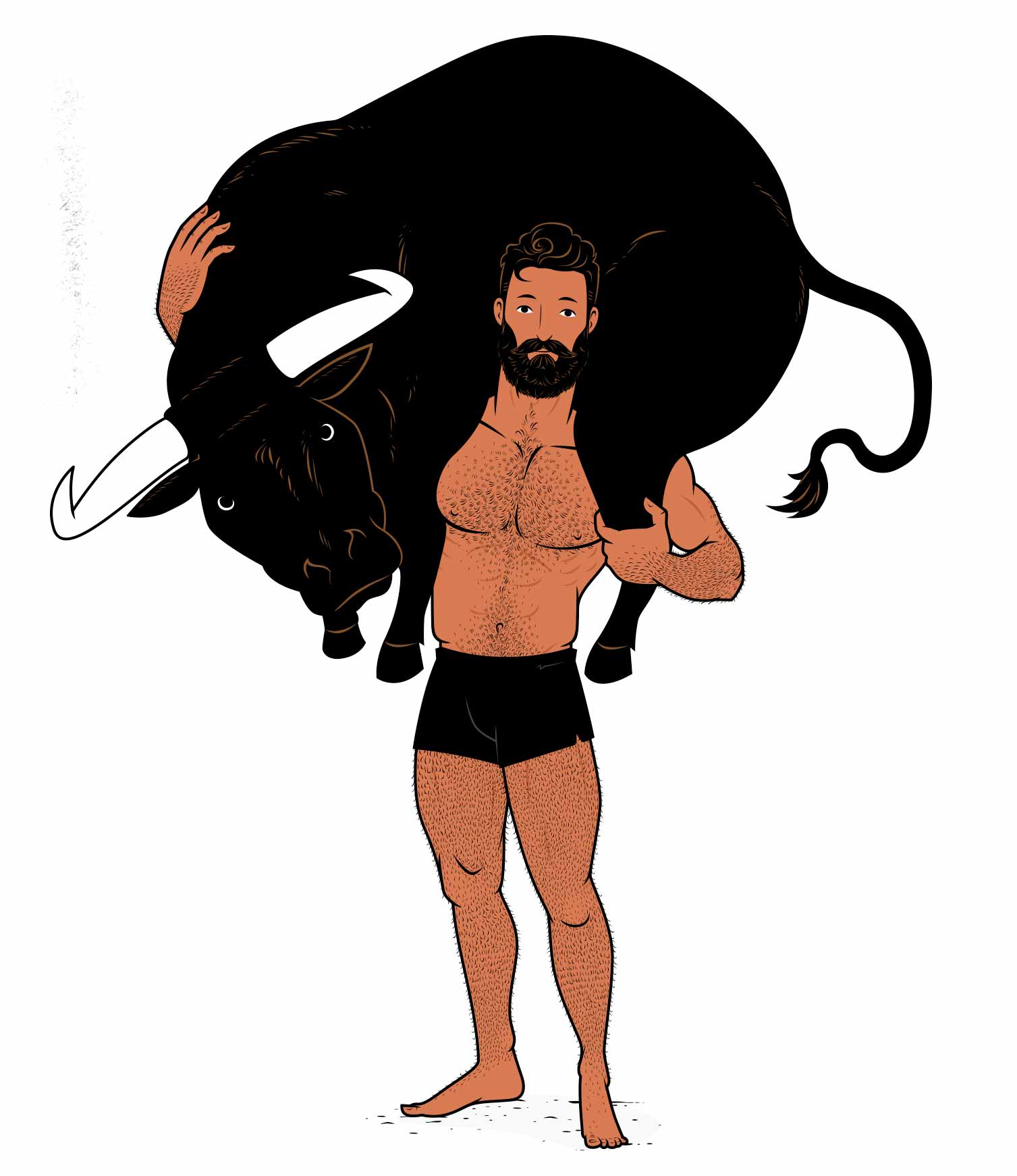
A few years later, while Milo was out for a brisk walk, he spied a tree with a suspicious crevice in its trunk. Curious about what secrets lay inside, he reached his hand into the crack. But his forearm was enormous. His arm got stuck. And when a roaming pack of wolves saw him trapped there, he couldn’t fend them off with just his left hand. They ate him.
What is Progressive Overload?
Progressive overload is when you gradually increase the amount of weight you’re lifting to continue challenging your growing muscles. The underlying idea is that to build muscle, you need to challenge your strength. And as your muscles grow bigger, it will take more to challenge them.
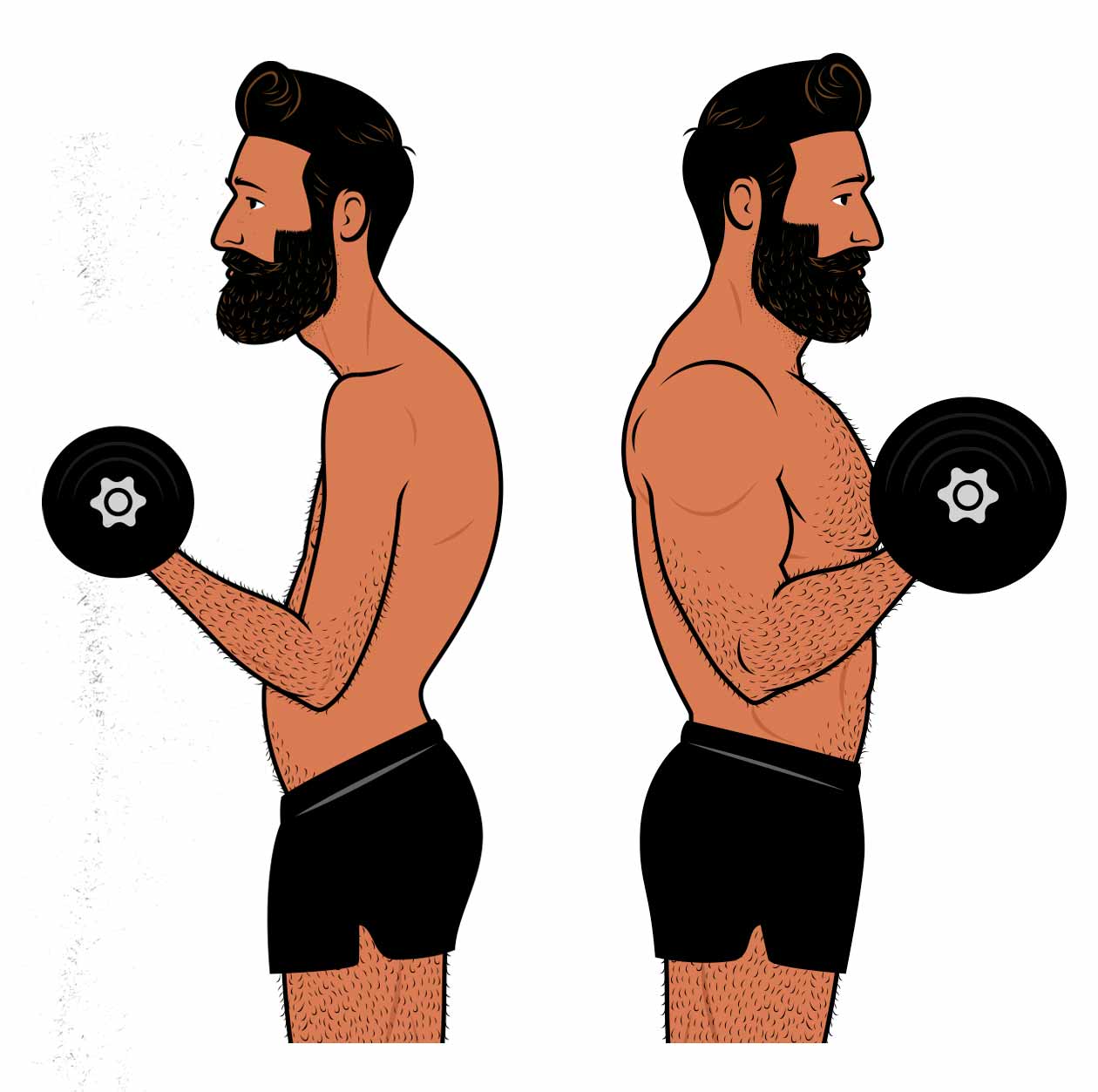
As we mentioned in the introduction, progressive overload is both the cause and effect of muscle growth. To keep getting stronger, you need to keep lifting more weight. To keep lifting more weight, you need to continue getting stronger.
In practice, to stimulate muscle growth, you need to bring your sets close enough to failure. If it’s a big heavy exercise, like a 5-rep set of squats, then leaving 3–4 reps in the tank is probably enough. If it’s a small light exercise, like a 20-rep set of lateral raises, then bring your sets all the way to failure. Lifting hard enough ensures that you’re stimulating muscle growth, at least in the muscles that limit you. If your lower back gives out first when deadlifting, it might get the brunt of the growth stimulus. It will become less of a limiting factor as it grows stronger, allowing you to work your other muscles harder.
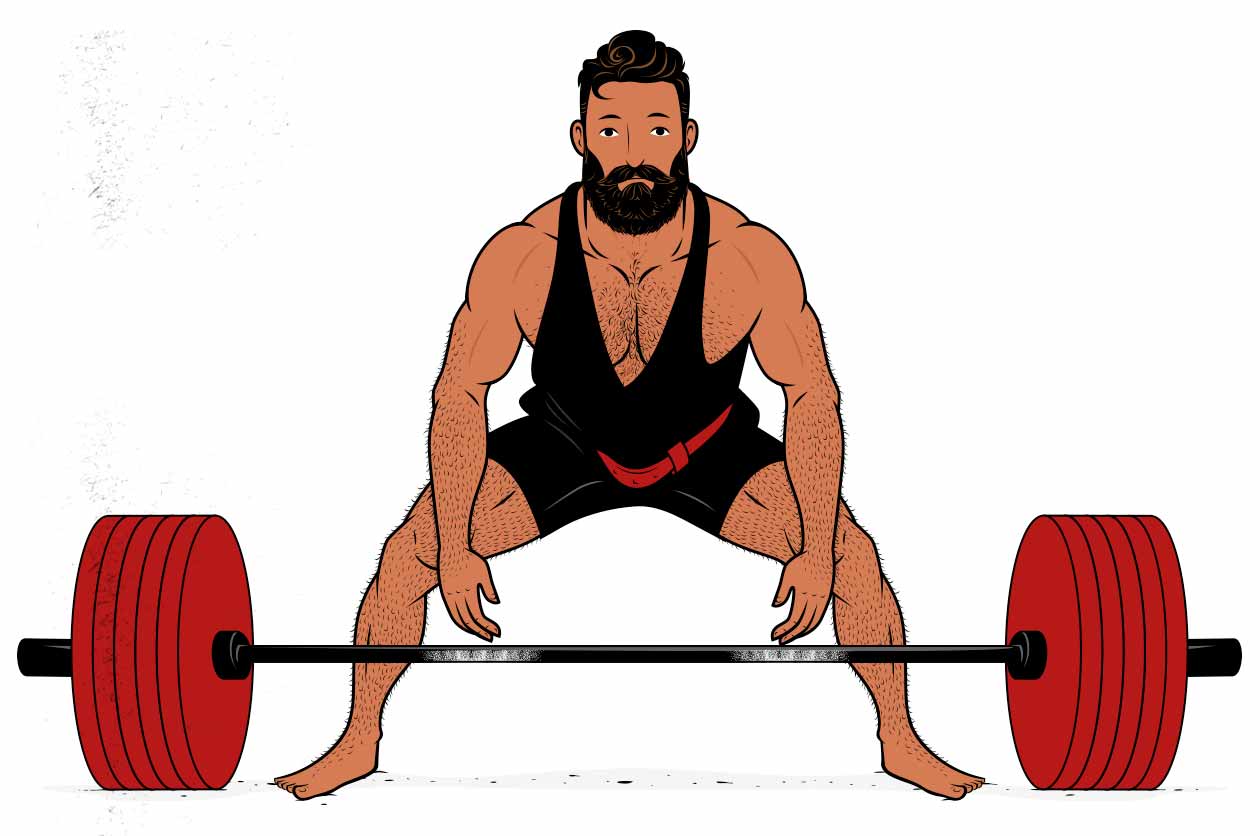
It’s hard for beginners to judge how far away from failure they are, so it’s common for people to put in too little effort, staying too far away from failure. That’s where progressive overload shows its magic. If you’re always fighting to lift more than last time, then you’ll always be inching closer to failure. If you’re using progressive overload properly, your program will be self-correcting. A workout that’s too easy might fail to stimulate a maximal amount of muscle growth, but the next workout will be harder, and so you’ll find your way there.
The Different Types of Progressive Overload
There are a few different ways that you can progressively overload your muscles. The most popular method, especially in strength training, is to lift a slightly heavier weight. For instance, adding a “nickel” (5 pounds) to either side of the barbell. That’s a very effective way of growing stronger. But there are other methods, too, in rough order of importance:
- Using a deeper range of motion: the deeper you go, the more your muscles are stretched. When your muscles are stretched, there’s more tension on them. Think of the tension in a stretched elastic. This extra tension stimulates more muscle growth. For example, maybe in your first workout, you can’t squat very deep. So you work on it. Over time, you learn to squat all the way down.
- Lifting heavier weights: when you lift a heavier weight, it puts more tension on your muscles. This extra tension stimulates more muscle growth. As your muscles grow stronger, you can continue adding weight to continue challenging them.
- Doing more repetitions: when you squeeze out an extra rep, you’re lifting more weight. When you do 8 reps with 100 pounds, you’re lifting 800 pounds. When you do 9 reps, you’re lifting 900 pounds. This challenges your work capacity, stimulating muscle growth. This works very well until you get up to around 20 repetitions. It continues to work somewhat well up to 40 repetitions. After that, you’ll develop muscular endurance more than muscle size and strength.
- Doing more challenging sets per week: when you add in more challenging sets, you’re adding in more work, increasing your training volume. Just keep in mind that these sets need to be challenging. If you aren’t taking your sets to within 0–4 reps of failure, you probably won’t stimulate much muscle growth. As a result, you’ll need to keep your sets challenging by using some of these other variables. For example, maybe in your first week of working out, two sets is enough to make you sore. In later weeks, maybe you can handle four sets without causing too much muscle damage or getting too tired.
- Choosing a more difficult exercise variation: some exercise variations are more challenging than others. Perhaps that’s because your leverage is worse, forcing your muscles to work harder to lift the same amount of weight. For instance, if you do push-ups with your hands raised up on a bench, you’re lifting around half your bodyweight. If you move down to the floor, you’re lifting 2/3rds of your weight. Even though your bodyweight is the same, you’re lifting more weight.
- Using shorter rest times: when you use shorter rest times, it’s kind of like squeezing out more repetitions. You’re demanding that your muscles do more work without adequate rest. However, keep in mind that although your efficiency per minute will stay high, your efficiency per set will drop. You’ll need to do more total sets. (This includes advanced techniques like drop sets, and sometimes supersets.)
- Increasing time under tension: when you lift more slowly, your muscles are kept under tension for longer. Even if you’re lifting the same weight and doing the same number of reps, it will be harder. This can stimulate muscle growth.(With that said, the best way to increase time under tension is usually just to do more repetitions.)
How to Use Progressive Overload
Increasing the Range of Motion
The very first thing you should do as a beginner is to try to lift with a deeper range of motion. Everyone is a little bit different. Different people have different mobility in their joints. But a good first step is to lift deeper. You can stimulate around 2–3x more muscle growth that way (meta-analysis, study, study).
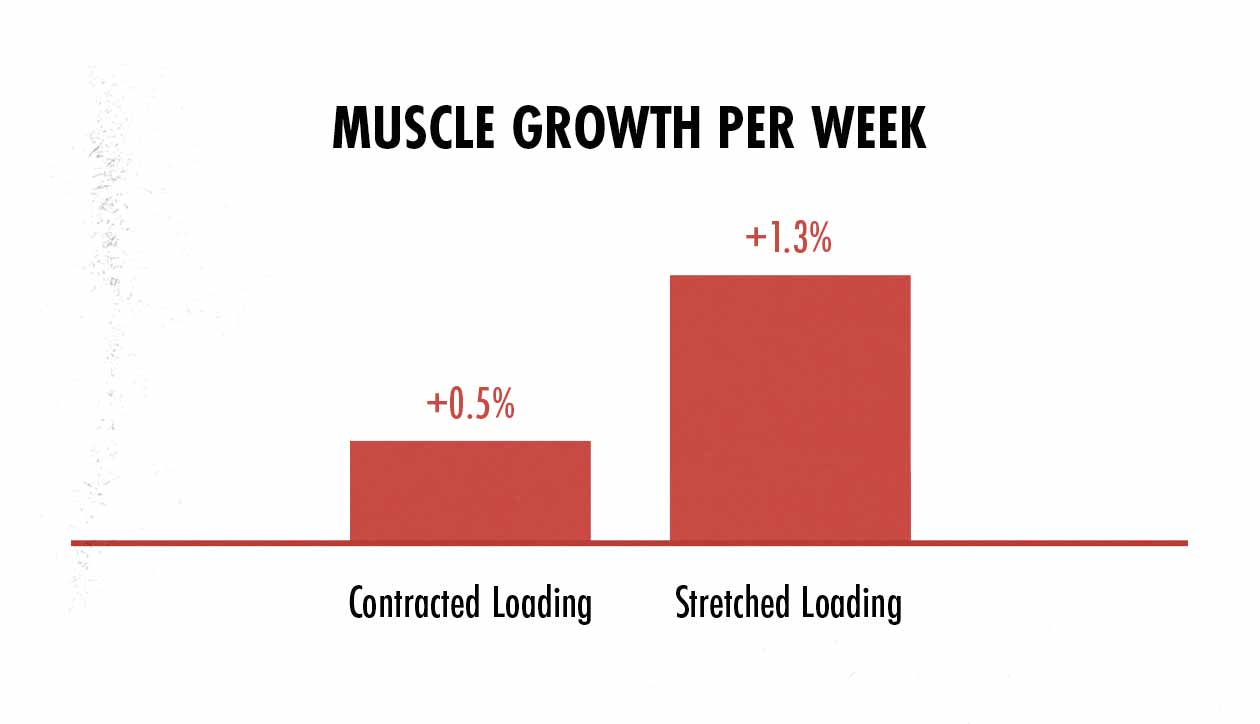
For example, when my wife first started squatting, she couldn’t squat very deep. We set up a pile of weight plates under her butt, and every workout, we’d remove one of those plates. She kept tapping the plates with her butt, squatting an inch or two deeper every week.
Lifting Heavier Weights
If you’re lifting as deep as you can (for now), it’s time to start loading the exercise heavier over time. This is where barbells, dumbbells, and exercise machines shine. They allow you to increase the load by a little bit every workout. This is the most classic form of progressive overload, and it’s very powerful.

For example, once my wife was squatting to depth, we started adding 2.5 pounds to either side of the barbell whenever she was able to complete all of her target repetitions. She was aiming for sets of 9 repetitions, so every time she got 9 reps in all of her sets, we added more weight.
Every time you lift heavier weights or get more reps with a given weight, you’re setting a new PR. You’re stronger than you’ve ever been, and you’re using that newfound strength to lift more weight than you ever have before.
Eking Out More Repetitions
If you aren’t loading the exercise heavier, do more repetitions instead. If you aren’t ready to go up in weight, or if your equipment doesn’t allow for it, then you can increase the number of reps you’re doing instead. For example, if my wife got 9 reps in her first set, 8 reps in the second, and 7 reps in the third, we might wait until she gets 9 reps in all three sets before we add weight.
With bodyweight exercises, adding more repetitions is often the main form of progressive overload. A beginner might only be able to do 5 push-ups. Over the next few months, they might work their way up to 30 reps. Or they might go from doing 2 chin-ups to doing 15 chin-ups. That’s perfect for building muscle. Even better if they’re building muscle and gaining weight, increasing the weight of their bodies, and thus increasing the load they’re lifting.
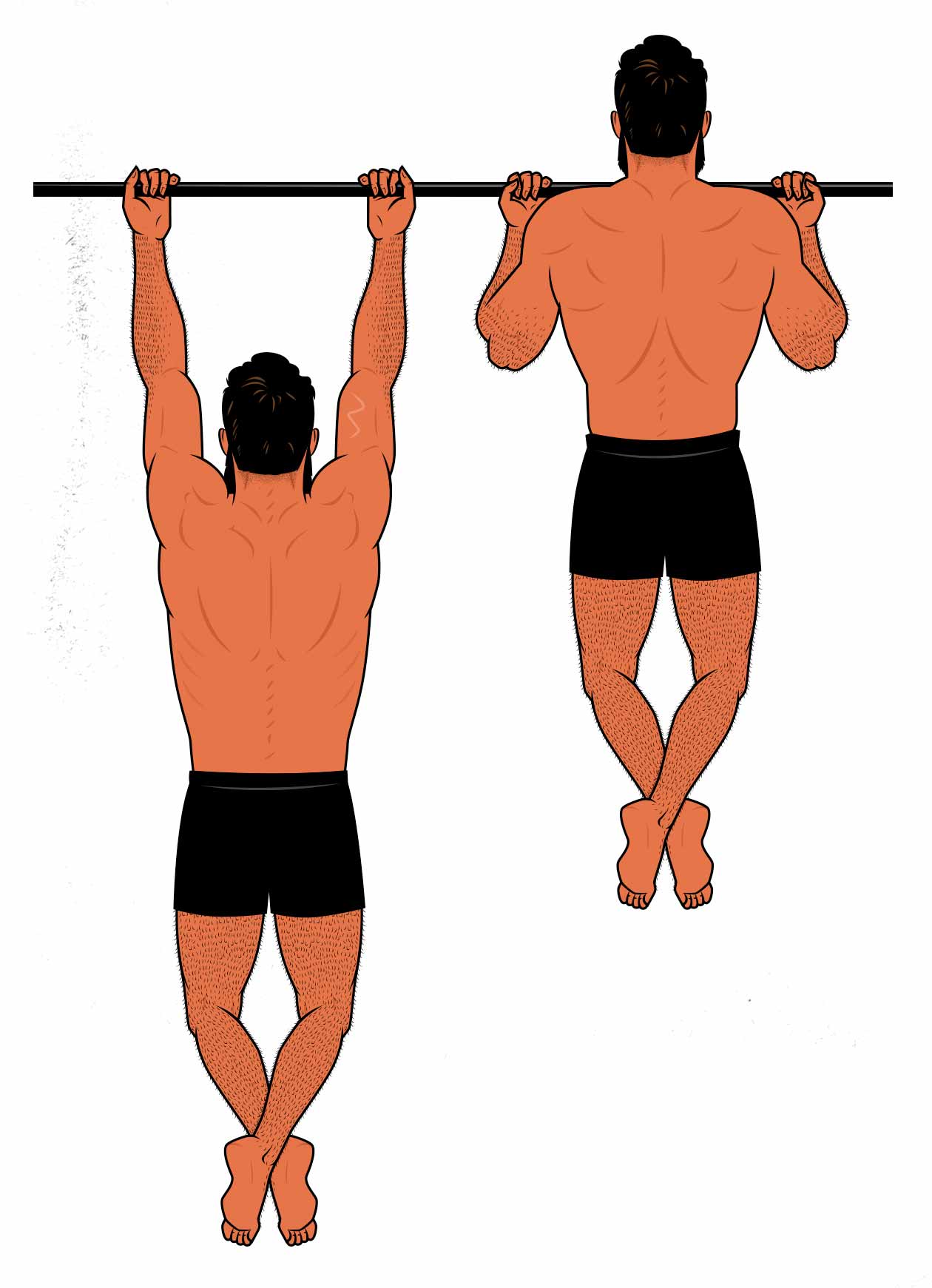
Finally, with smaller exercises, such as lateral raises, even small jumps in weight can be extreme. There’s a big difference between doing lateral raises with 10 pounds versus 15 pounds. That’s a 50% increase in weight! That’s like squatting 100 pounds one workout, then adding 50 pounds the next workout. So it might make more sense to start with sets of 10 reps, work your way up to sets of 20 reps, and then add those 5 pounds. Maybe that drops you back down to 10 reps, at which point you work your way up again.
Adding Sets (Raising Training Volume)
Another form of progressive overload is to do more challenging sets per muscle per week. There are a few ways to do this:
- Add a set to the exercise: doing 3 sets of bench press one week, 4 sets the next week.
- Add an exercise to the workout: adding 2 sets of chest flyes after the bench press.
- Add another workout: go from benching once per week to benching twice per week.
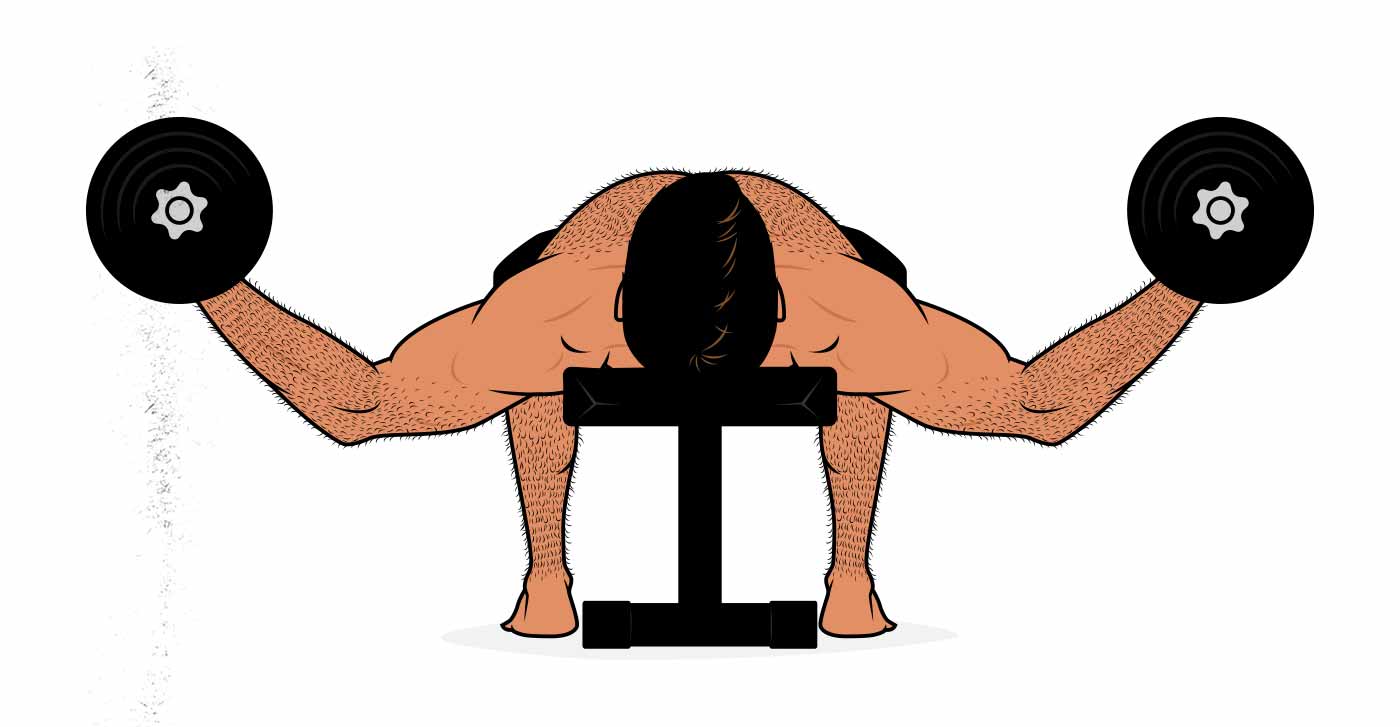
All of these techniques work very well. It works well for beginners who are trying to improve their work capacity and build muscle as fast as possible. And for intermediate lifters who’ve hit a plateau, raising training volume can often get them gaining muscle size and strength again.
The catch is that adding sets is good for stimulating muscle growth, less good for measuring muscle growth. And that’s fine, especially since it can be used in conjunction with the other types of progressive overload. You can lift more weight, squeeze out more reps, and add sets whenever you need to.
Whether you add sets to your workouts every week is up to you. If you’re making good progress, you don’t need to increase your training volume. What you’re doing is already working. But you might want to add that extra set anyway, just in case there are more gains to be made with that extra bit of work. It’s up to you.
Choosing More Difficult Exercise Variations
We usually recommend that beginners start with simple, brute-strength versions of the big compound lifts. That way they have an easier time learning the movement patterns, coordination is less likely to be a limiting factor, and they get to stimulate a ton of muscle growth right out of the gate.

The problem with beginner lifts is they tend to be harder to load heavier. Goblet squats are amazing for building muscle, but once you can do a dozen reps with the heaviest weight, they become torture. At that point, if you have access to a barbell, you can switch to a front squat or high-bar back squat. (If you don’t have a barbell, you can hold two dumbbells.)
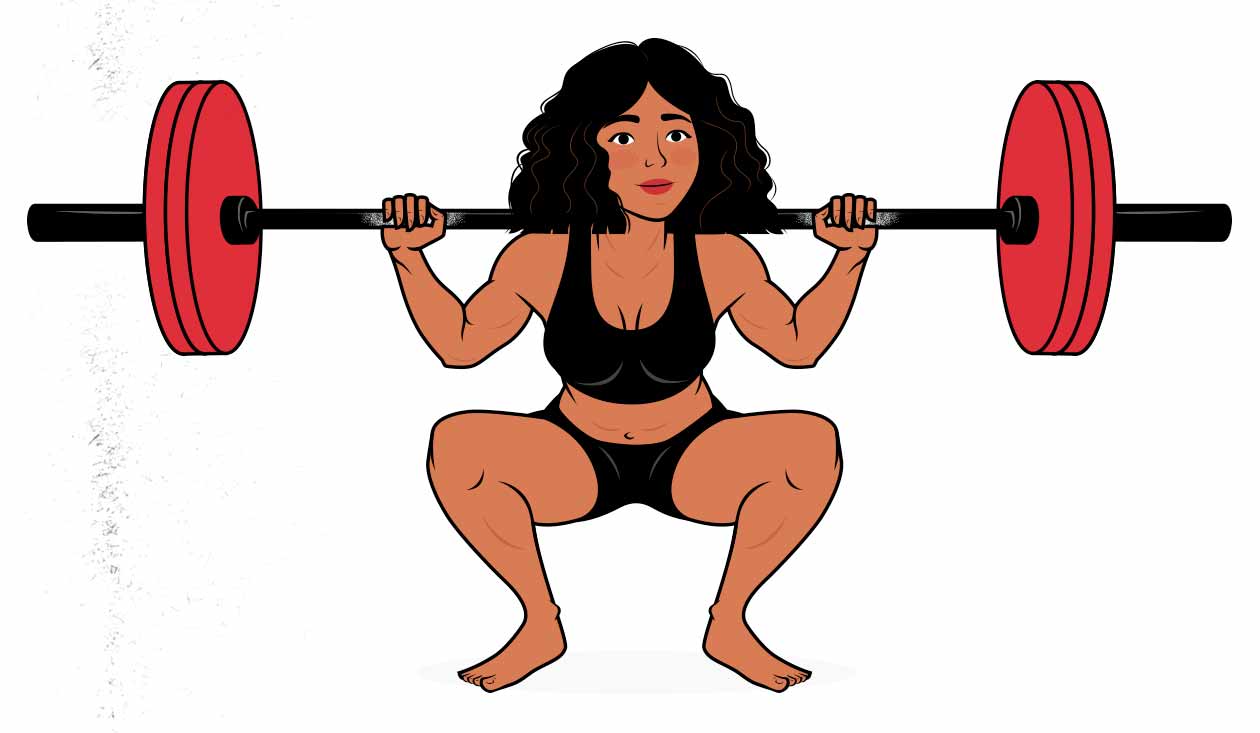
In this case, switching to a move difficult variation is a way to make progressive overload easier. Once you’re using a barbell, it’s easier to gradually add more weight. You can fit like a thousand pounds on that thing, moving in small “micro-plate” increments of half a pound. Most of us will do better by going up in 2.5–10 pound increments, but the point is, the barbell is designed for progressive overload. You have options.
But sometimes you have to switch to advanced variations because you lack equipment. Maybe you’re doing a bodyweight workout routine. Maybe you can’t switch from a push-up to a bench press. And so maybe when you get to 30 push-ups per set, you progress to deficit push-ups with your feet raised, dropping you back down to 15 reps. That gives you some room to work your reps up again.
So as a rule of thumb, work your way from the beginner variation to the “normal” variation. From goblet squats to front squats, from lowered chin-ups to full chin-ups, and from Romanian deadlifts to conventional deadlifts. From there focus on adding weight. You can eventually switch to even more advanced variations, such as deficit deadlifts. But those tend to be exercises you do in addition to your main exercises.
Using Shorter Rest Times
Another form of progressive overload is to shorten the amount of rest between sets. Not giving yourself enough rest between sets makes it harder to lift as much weight in those following sets. If you can maintain the same performance as your last workout, you’ve given your body a greater challenge, and you’re showing a sign of having made progress. (You can also get a great pump this way!)
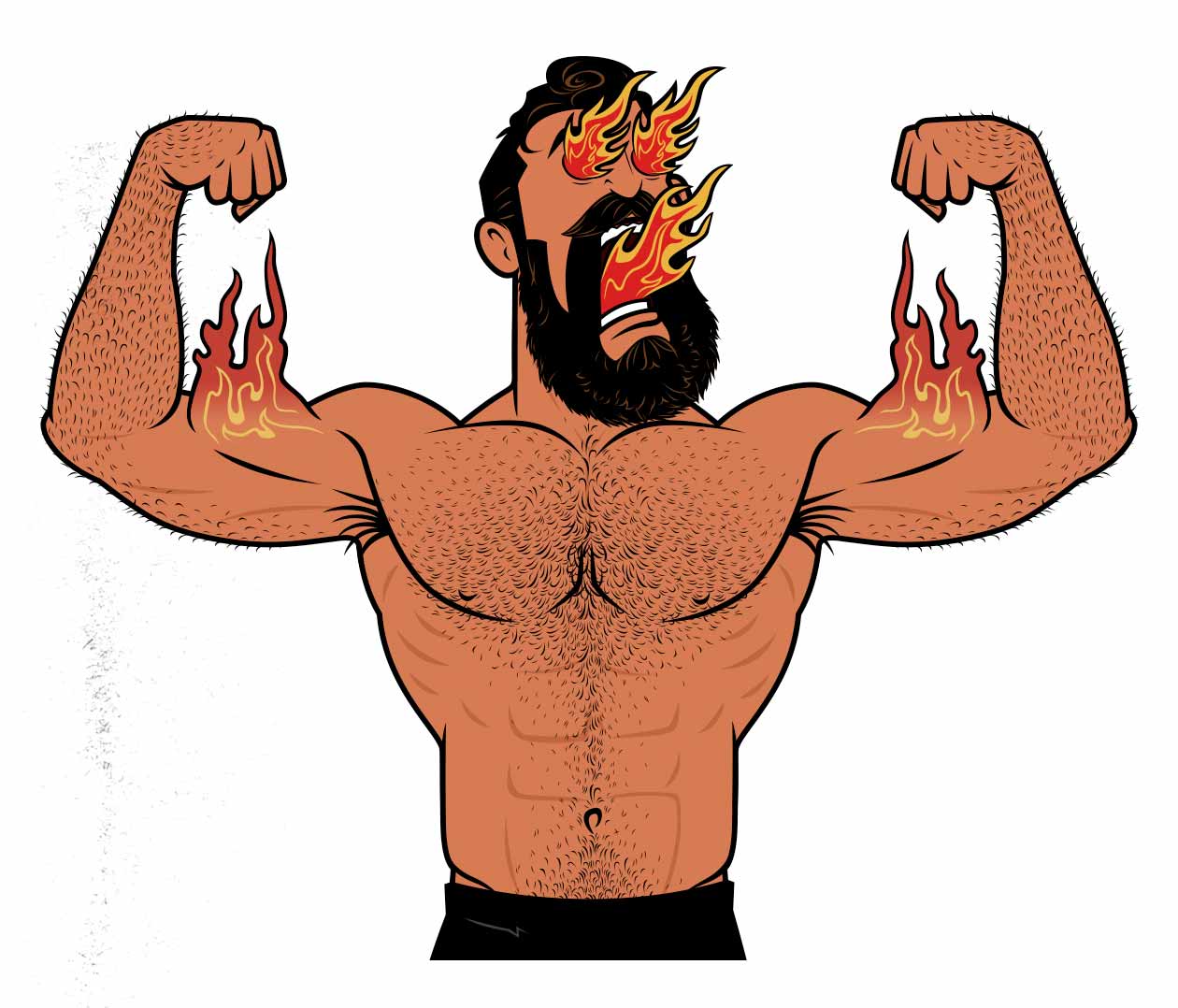
What’s great about using shorter rest times is that you’ll keep your workouts short, dense, and efficient. It’s common for people to build more muscle, get stronger, work harder, and thus require longer rest times. Beginners are often feeling fresh 1–2 minutes after deadlifting 135 pounds. More advanced lifters can get wiped out for 10 minutes after doing a set with 405. But if you go through phases of using shorter rest times, you can improve your “lifting fitness”—you can adapt to recover faster between sets. (Doing cardio can help with this as well.)
The catch is that when you shorten your rest times, you’re limiting the amount of work you can do. It’s a method of progressive overload that actively interferes with the others. Good luck adding weight or reps while cutting off a minute between sets. And so this technique, while valuable, should be sprinkled into your routine like a gourmet salt you can’t quite afford. Don’t use it on everything. Only use it when it fits your current goals.
Increasing Time Under Tension
This is the odd method in the bunch. You can lift more slowly, increasing the time under tension. Yes, that will make lifting weights more challenging. But it means you won’t be lifting very athletically or explosively. And the resistance curves of your lifts won’t be as good. And you’ll have more trouble challenging your larger, stronger muscle fibres. As a result, you’ll gain less strength, and perhaps less muscle, too (study, study, study, study).
But you can also increase the time under tension by doing more reps. After all, the more reps you do, the longer each set will take. And this method allows you to continue lifting in an athletic way. You can lift the weight explosively, lower it back down under control, and then heave up another rep. (Note that lifting “explosively” doesn’t mean “jerk the weight.” Don’t jerk weights around. Think of smooth but powerful acceleration. Like flooring the pedal of a Ferrari.)
So instead of lifting weights more slowly, I’d recommend doing more reps instead. And that already has its own category. For more, we have an article on how fast to lift and lower weights.
Overload the Muscles You Want to Grow
Compound lifts are great for gaining overall muscle mass. Most of them have a muscle they’re particularly good at growing, too. You can build a big back with chin-ups and rows. You can build a full chest with bench presses. You can build big glutes with squats and deadlifts. But keep in mind that the limiting factor is worked harder than the other muscles. If your chest gives out before your triceps when bench pressing, your triceps might not be challenged enough to grow optimally (study).
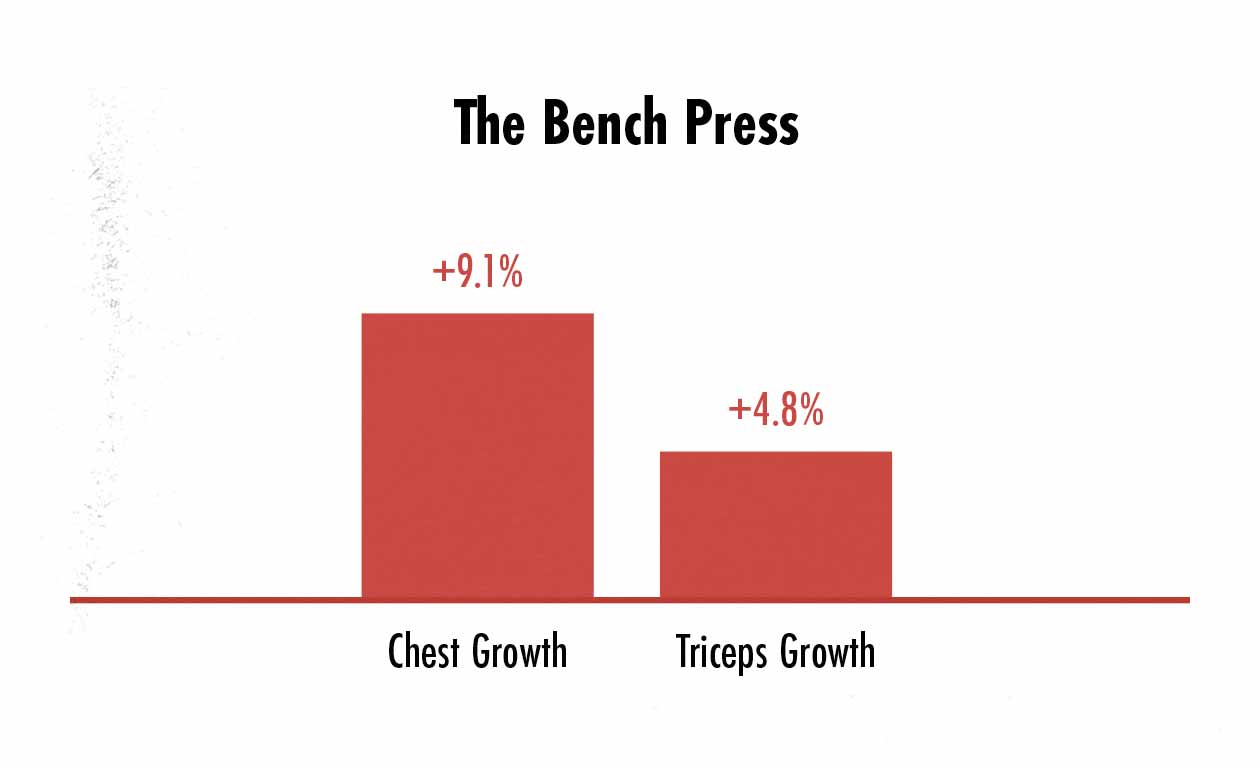
There’s another problem, too. Some muscles can’t activate properly during compound lifts. Your elbows move in front of your body when bench pressing, lengthening your triceps. And so they can’t fully contract. They won’t be fully stimulated. That’s one reason why you’ll see some natural powerlifters, especially in lower weight classes, who are incredibly strong and yet still have small arms. It’s because the compound lifts they’re doing aren’t fully engaging or challenging the muscles in their arms.
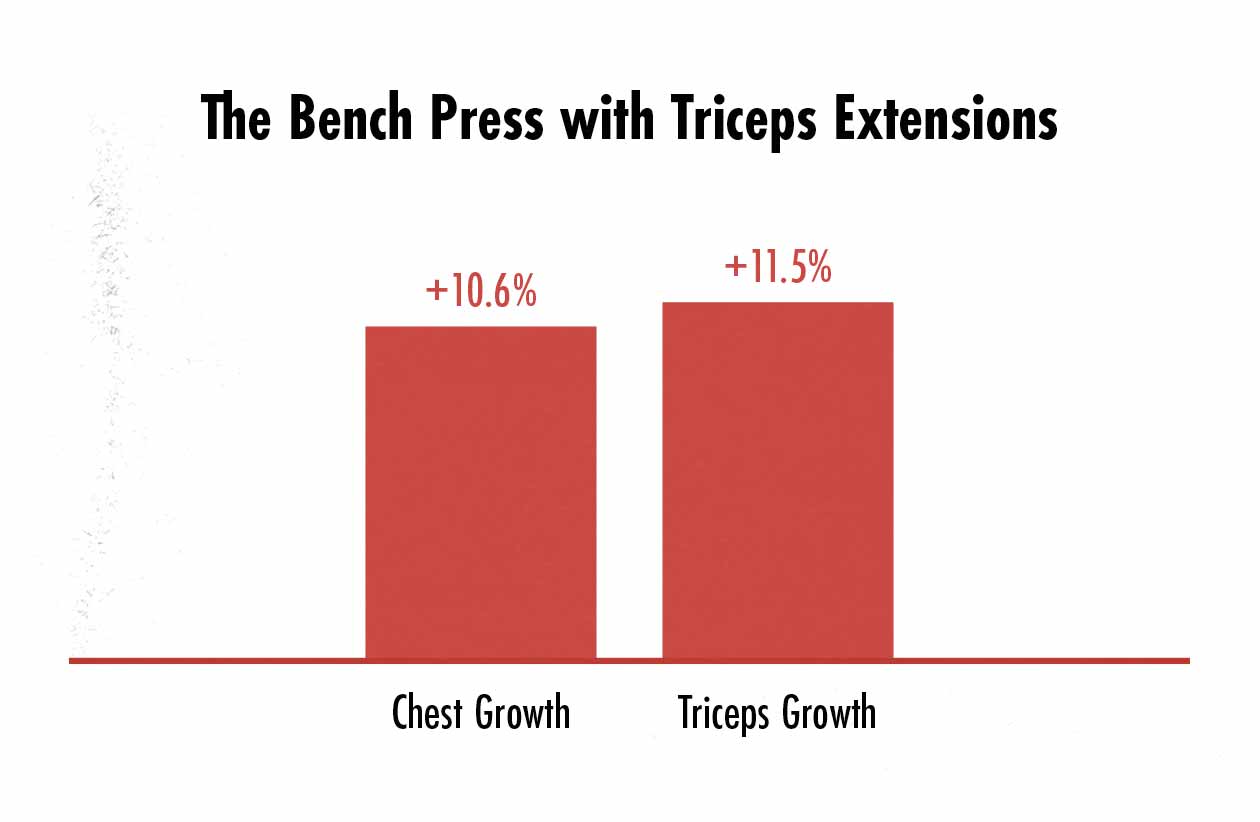
That’s why isolation lifts are so important. You can choose lifts that fully engage and challenge your target muscles. Triceps extensions for your triceps (long head), biceps curls for the biceps (long head), leg extensions for your quads (rectus femoris), neck curls for your sternocleidomastoid, and so on. You don’t need to do all of them, though. Just choose the ones that work the muscles you’re trying to grow.
How to Track Your Progress
If you’re interested in powerlifting, you can test and track your 1-rep max on the squat, bench, and deadlift. If you aren’t interested in powerlifting, you don’t need to do that. You can pick a moderate rep range that you’re good at (e.g. your 10-rep max), and you can pick exercises that suit your body and your goals.
We recommend tracking your strength on the five big compound lifts:
- Squat variation (e.g. front squat): a great proxy for the strength of your legs.
- Bench press variation (e.g. barbell bench press): a great proxy for the strength of your chest, the fronts of your shoulders, and to a lesser extent, your triceps.
- Deadlift variation (e.g. conventional deadlift): a great proxy for the strength of your hips, traps, and spinal erectors.
- Chin-up variation (e.g. weighted chin-ups): a great proxy for the strength of your upper back and biceps.
- Overhead press and/or hip thrust variation: a great proxy for the strength of your shoulders and/or hips.
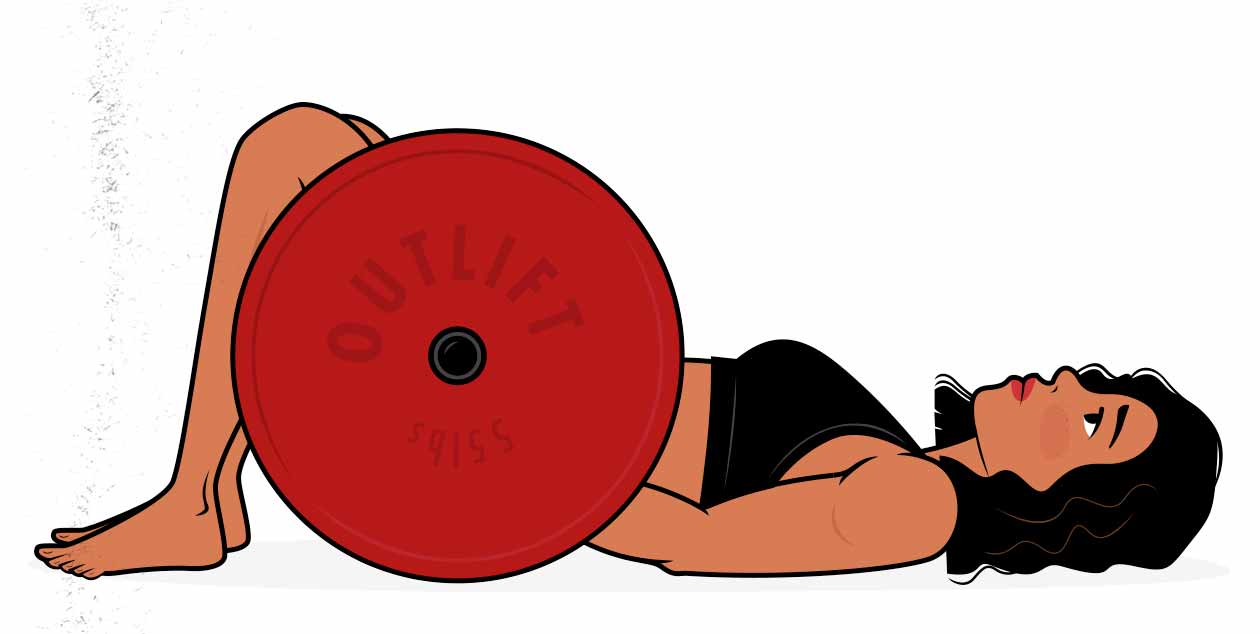
Most of our male readers want bigger shoulders, so for them, the overhead press is a great lift to track. Most of our female readers want bigger hips and glutes. For them, the hip thrust is a great compound lift to track.
If you’re getting stronger at those five big lifts, you’ll be training most of the muscles in your body, and you’ll be developing the postural muscles that you need to be strong overall. You won’t have any glaring weak links.
Once you have your main links as your foundation, you can add isolation lifts on top of that. Those isolation lifts are up to you. If you want bigger biceps, focus on progressively overloading a biceps exercise, such as a barbell curl. Just remember that progress on these smaller exercises can be slower, especially if you’re doing them later in your workouts when you’re lower on energy.
How Often Should You Make Progress?
As a beginner, you should try to make some sort of progress on every lift every workout. Maybe that’s lifting 2.5–5 pounds more, squeezing out an extra rep on your third set, getting a deeper stretch at the bottom of a lift, or lifting with slightly better technique. Some sort of progress.
As you get more advanced, it helps to fight for progress, but you have to be realistic. If you’re close to your genetic potential, it’s hard to gain muscle size and strength. You may only gain strength while bulking—while adding overall mass to your frame. And even then, it might take a full 5-week training phase to add 5 pounds to your bench press. That will still add up to 60 pounds per year. That would be a rare year.
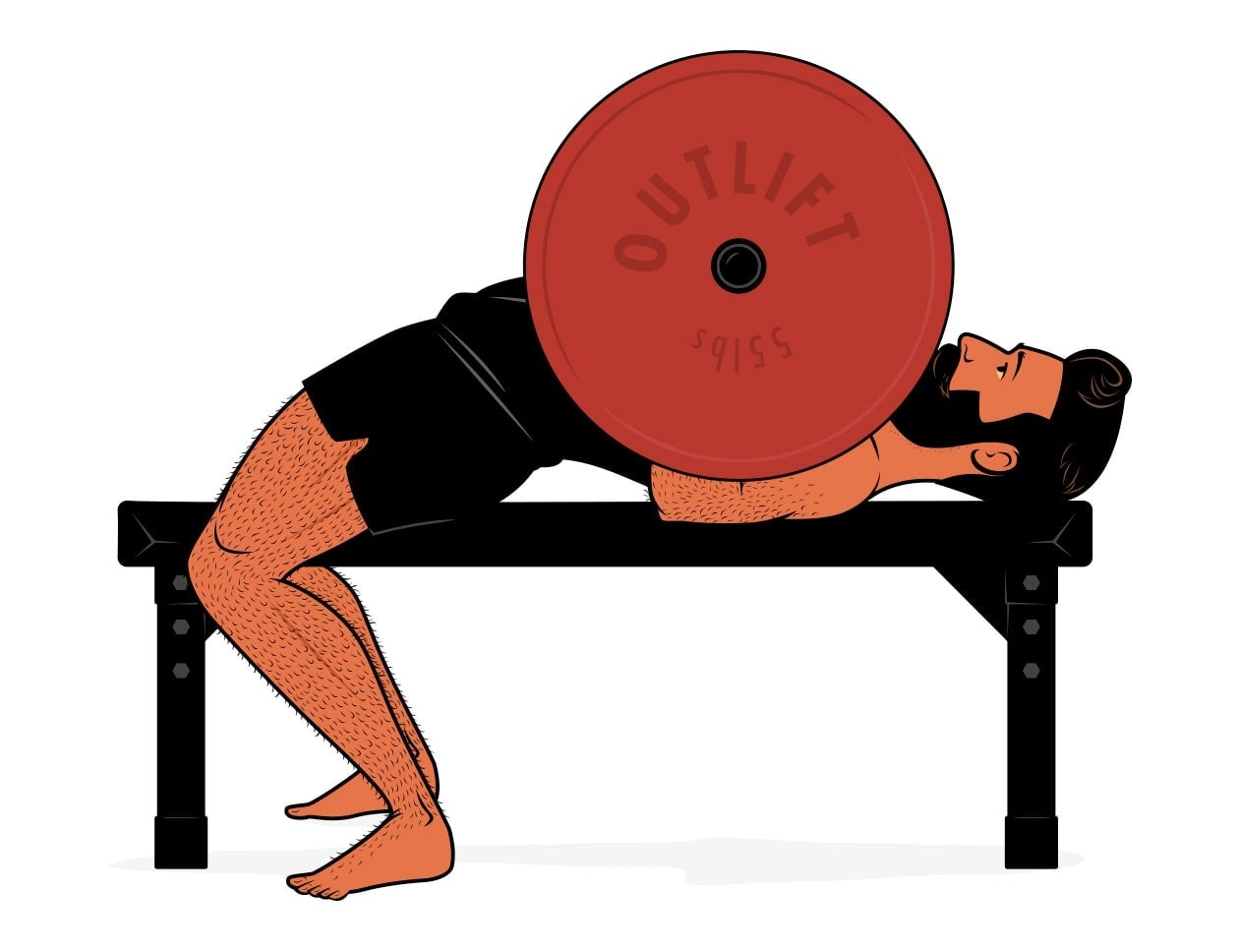
Remember that sometimes you have to take a step back before you can take a step forwards. You can’t always be adding weight, squeezing out more reps, and adding sets to your workouts. If you keep fighting for more, eventually you’ll get to a point where you’re doing two-hour workouts every day, lifting to failure on every set of every exercise.
That’s why it can help to take periodic “deload” weeks. Every few weeks, scale back your volume (number of sets) and proximity to failure. Not only will this reset the amount of volume you’re doing, but it will also allow you to recover more fully. And fatigue can mask progress. Sometimes you are getting stronger, it’s just you’re so tired that you can’t access that strength. After a deload week, you’ll often reveal the strength you’ve already gained.
Also, experiment with variety every few weeks, especially if you’re stalling. You can switch up the rep ranges you’re trying to progress in. You can change the exercise variations you’re doing.
Remember that the goal is to get stronger over time, but be patient. Be cunning. You might be able to brute-force your way to a 2-plate bench. But to get a 3-plate bench, you may need to steal it under the cover of a moonless night.
How Not to Get Hurt
This probably goes without saying, but you need to make sure you aren’t chasing progress so aggressively that you set yourself up for injury. It’s okay for our technique to deviate a little bit on harder sets. When you challenge yourself on the deadlift, your spine will round a bit. That’s inevitable, and it’s okay.
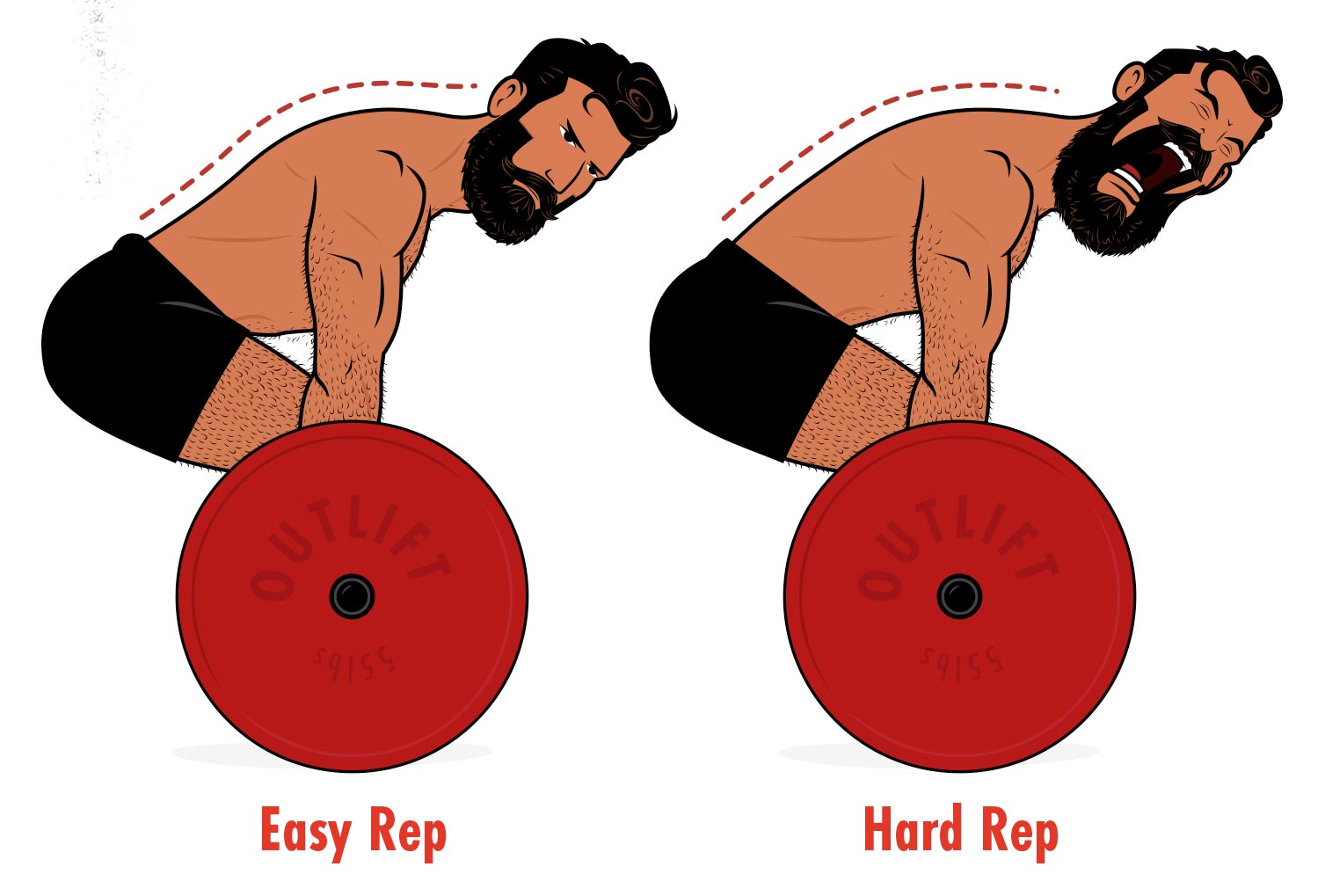
The trick is that you don’t want to let your form deviate to the point where it’s dangerous. As a beginner, it’s better to err on the side of lifting safely on the big compound lifts (squats, bench presses, deadlifts, and overhead presses). Use the simpler lifts as an opportunity to push yourself harder. Go to failure on your biceps curls, bodyweight hip thrusts, one-arm rows, triceps pushdowns, chin-ups, and lateral raises.
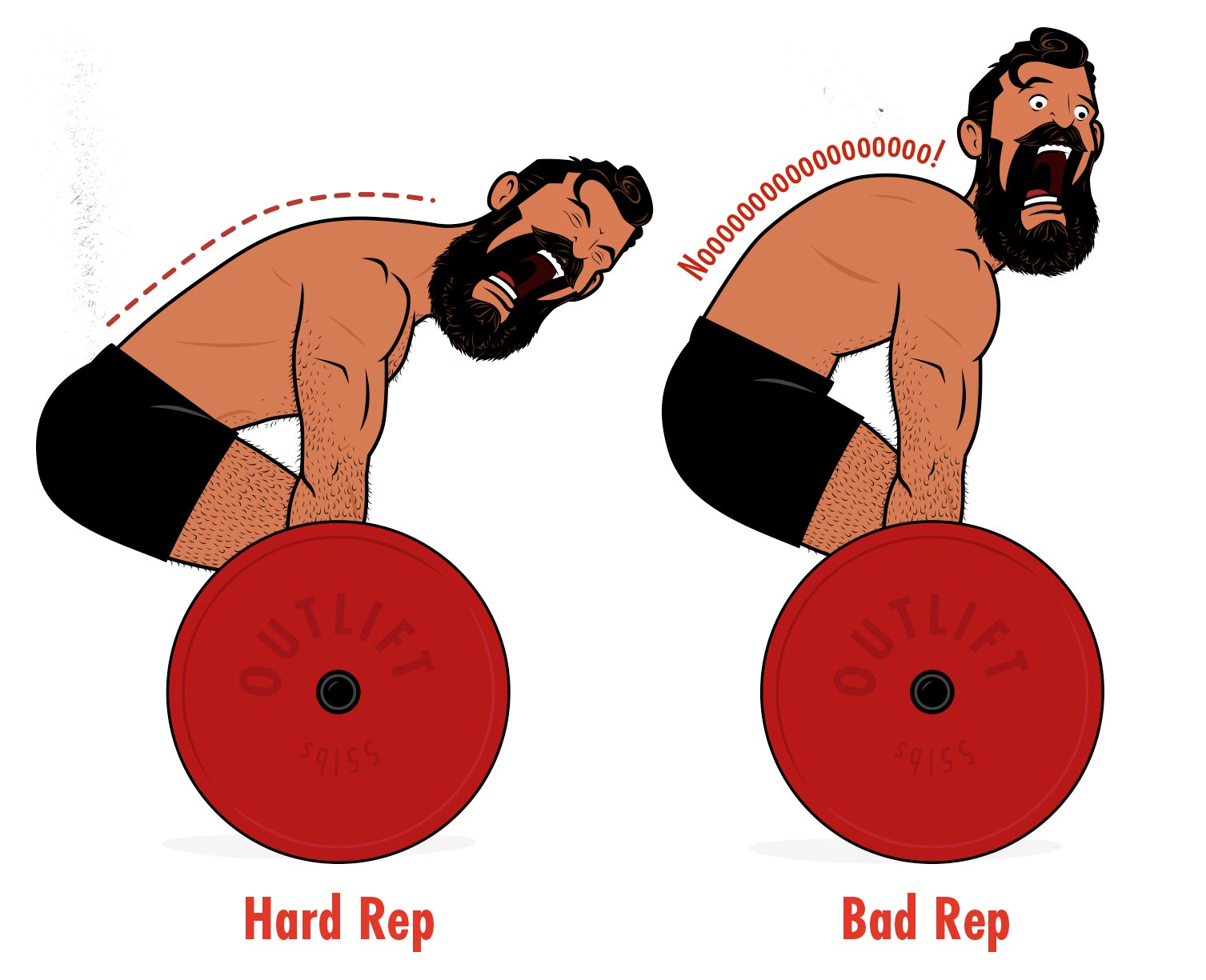
As an intermediate, you’ll learn the nuances. You’ll learn the difference between your spinal erectors flexing and working versus failing and losing control. You want to stop before you fail, especially on these bigger lifts. And if you’re spinal erectors are giving out, you’ve already failed. Try not to do that.
It’s okay if your lifts aren’t symmetrical. We aren’t symmetrical. We can’t expect our lifts to be. One of your elbows might tuck more than the other while benching. Your knees might not point in the same direction while squatting. This isn’t a breakdown of technique, your asymmetrical body is just lifting in a way that suits it. That’s okay. Just focus on lifting in a way that makes you feel strong and athletic.
If you’re a beginner, remember that your technique won’t be very good. That’s okay. Just as you’ll get progressively stronger, you’ll also get progressively better at lifting. We don’t expect toddlers to learn how to run before they ever try running. You can’t expect to learn how to lift before you even start lifting. Don’t stress about lifting with perfect technique. It will improve over time.
But don’t be reckless. Don’t jerk the weight. And don’t add weight to the bar if you aren’t ready for it. There’s nothing wrong with trying to get extra reps instead. Or maybe you spend a week where you simply try to lift with better technique. You can’t make progress every single workout. Don’t try to force it.
Progressive Overload for Muscle Size vs Strength
Training for muscle size and strength is very similar. A bigger muscle is a stronger muscle, so in most cases, the best way to get stronger is to get bigger. There’s a caveat, of course. Bigger biceps won’t help you squat more weight. You need to develop the relevant muscles. And for the big compound lifts, a big part of that is developing your postural muscles, such as your spinal erectors. That’s why bodybuilders are often weak. They might have big legs, but they can’t deadlift much weight if their spinal erectors aren’t big enough to support it.
This brings up another common misconception. Some people think that to get stronger in the “hypertrophy rep range” of 6–20 reps per set, they should train to get stronger in the “strength rep range” of 1–5 reps per set. That’s not true. There’s no evidence to suggest that heavier training is better at improving your strength in higher rep ranges. If anything, we’d expect the person training in a given rep range to make better progress within that rep range. So if you want to build muscle and increase your 10-rep max, think of doing sets of 6–15 reps instead of trying to increase your 1-rep max. (Not that there’s anything wrong with training to increase your 1-rep max. I do it. It’s just not useful for gaining muscle size or general strength.)
The Importance of Eating & Resting Enough
Progressive overload of challenging growing muscles. Some people mess this up by focusing on the challenge without focusing on the growth.
- We need to challenge our muscles enough to stimulate muscle growth, which requires gradually adding weight, reps, depth and so on to our exercises.
- Then we need to give our muscles what they need to grow: enough protein, enough food, and enough rest. That’s what allows us to lift more weight next time.
If you find yourself unable to lift more weight or wring out more reps, we call this a plateau. There’s nothing wrong with being at a plateau. Reaching a plateau implies that you’re higher than you were before. Your former self is there below, in the valley. Maintaining your progress is great.
Oftentimes, you can get past a plateau by adjusting our progressive overload techniques. Maybe adding some sets of skullcrushers will give you the strength you need to lock out a heavier bench press. But that only works for so long. If you want to continue gaining size and strength in the longer term, make sure you’re gaining weight (bulking). It doesn’t take much. Gaining as little as a pound per month can do the trick.
Progressively Overloading Calories
To continue gaining muscle size and strength, you need to keep adding mass to your frame. If your goal weight is higher than your current weight, there’s only one way to get there. You need to gain weight. This is especially important for skinny guys and skinny gals. The only way to overcome skinniness is to add a substantial amount of muscle to your frame.
The same goes for strength. The best way to continue getting stronger is to continue getting bigger. If you’re stuck benching 135 at 130 pounds, maybe 225 is waiting for you at 160 pounds. Maybe 315 is waiting for you at 185. It was for me.
Here’s where progressive overload comes in. Just like how stronger muscles require harder workouts to challenge them, bigger people require more calories to continue growing. Every pound of muscle you gain burns around 6 calories per day. If you gain 20 pounds of muscle, you’ll need to eat 120 extra calories per day to maintain that progress. And if you’re very active, it also means you’ll need to spend some extra energy carrying those extra pounds around. Mind you, this doesn’t tend to be a problem, even for naturally skinny people. Your appetite will adjust over time. Once you reach your goals, your appetite will naturally cue you to eat more food.
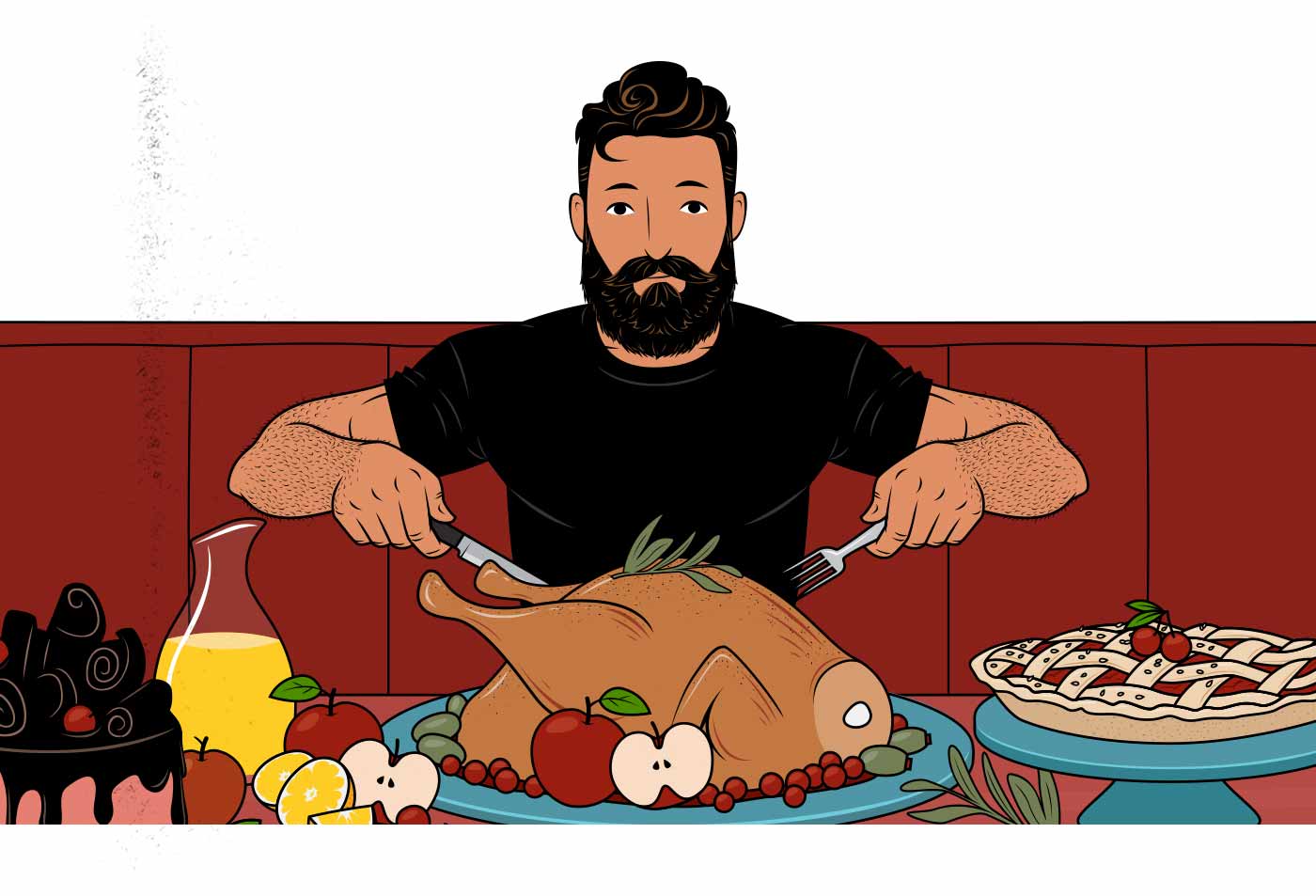
Here’s where your dastardly body can trick you: your metabolism is adaptive. When you start eating more calories, your body senses the surplus, and it starts burning calories more readily. This isn’t a bad thing. It’s great to eat more and burn more. You get an abundance of nutrients that way. But it can be hard to gain weight when your metabolism is revving up to match the extra calories you’re eating. And this adaptive response is often exaggerated in people who find it hard to gain weight—hardgainers. I’m this way. Perhaps you are, too.
If you weigh 120 pounds, maybe you can bulk on 2,400 calories per day. When you reach 125 pounds, maybe you need 2,500 calories to keep growing. At 130 pounds, maybe you need 2,600. If you aren’t progressively increasing your calorie intake, your weight gain will stall. You’ll stop gaining muscle size and strength. (Note that when you stop bulking, your metabolism will slow back down. You can go back to eating according to your appetite.)
In practice, you can weigh yourself every week. If you don’t gain any weight for two weeks in a row, eat an extra 200 calories per day. You don’t need to count calories, though. You just need to add in extra food: a tall glass of milk or soy milk, 1/3 of a cup of trail mix, an extra chicken breast at dinner, a Quest bar. That should get the scale moving again. Even a small amount of weight gain can be enough. Gaining a pound per month is still progress.
For more, we have articles explaining how to eat a bulking diet. Here’s our bulking diet guide for women, and here’s our bulking diet guide for men. And here’s our article about how to eat more calories.
Summary
To master the art of progressive overload, you need to stimulate growth by challenging your muscles, then recover and grow, and then challenge your muscles again. As you grow bigger and stronger, it will take harder workouts to challenge you. That’s why you need to increase the weight, the reps, the depth, and so on.
If you can add 5 pounds to your bench press every 2–3 weeks while following a 6-month bulking program, that’s an extra 50 pounds added to your bench press. Progress might feel slow during those weeks where all you’re doing is adding a rep to your third set, but over time, these gradual improvements add up.
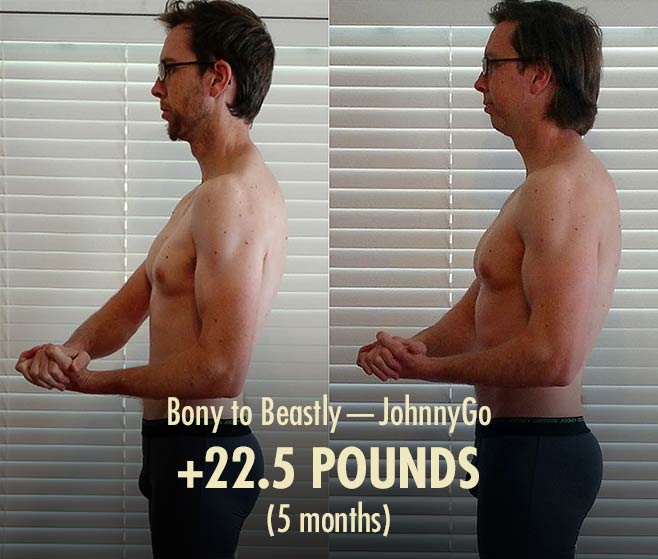
The same is true for any lift. If you were eager to bulk up your hips instead of your chest, you’d follow the same principles with your squat, deadlift, and hip thrust variations. If you can get a little bit stronger every week or two, the results can add up fast.

We recommend choosing a few core compound lifts that work all the major muscles in your body. Track your strength on those lifts, progressively overloading them over time. You don’t need to track your 1-rep max on the Big 3, as a powerlifter would (unless you’re a powerlifter). Rather, track your rep maxes on the lifts that suit your body and your goals best. For instance, instead of tracking your 1-rep max on the low-bar back squat, track your 10-rep max on the front squat.
Here are the default exercises we recommend progressively overloading:
- A squat variation, such as goblet squats for beginners and front squats for advanced lifters.
- A bench press or push-up variation. Men often want to progress to a bench press (but should keep training push-ups on the side). Women often do very well sticking with push-up variations, eventually moving to deficit push-ups.
- A deadlift variation, such as dumbbell sumo deadlifts to start, then conventional or Romanian deadlifts later.
- A chin-up variation. Lat pulldowns, rows, or lowered chin-ups are good to start. Full chin-ups work well later.
- An overhead press or hip thrust variation. Most of our male readers want bigger shoulders, so the overhead press is great to progressively overload. Most. ofour female readers want bigger hips and glutes, making the hip thrust or glute bridge a great addition.
If you’re making progress on these core lifts, you’re making progress overall. Focus on moving to the more advanced variations, lifting with a deeper range of motion, adding weight, and adding reps. If you aren’t feeling sore or your progress is slow, try adding extra sets (3 sets to 4 sets) or extra exercise variations (bench press and push-ups). If your workouts are a multi-hour slog, spend a month or two shortening your rest times while trying to maintain your performance.
And then you also have “accessory” lifts. And you can use whatever accessories you want. If you want bigger triceps, get stronger at skull crushers. If you want bigger hamstrings, get better at leg curls. Your main lifts have your overall size and strength covered. These isolation lifts are yours. Remember to use progressive overload on them, too.
If you’re a beginner, remember to challenge your muscles even as you improve your technique. Squatting deeper is great, but remember to bring those sets close to failure. If anything, err on the side of lifting too hard, especially on simpler lifts like biceps curls, leg extensions, one-arm rows, and hip thrusts. You can always ease back on the next set if you accidentally hit failure. Learning to lift harder is an important
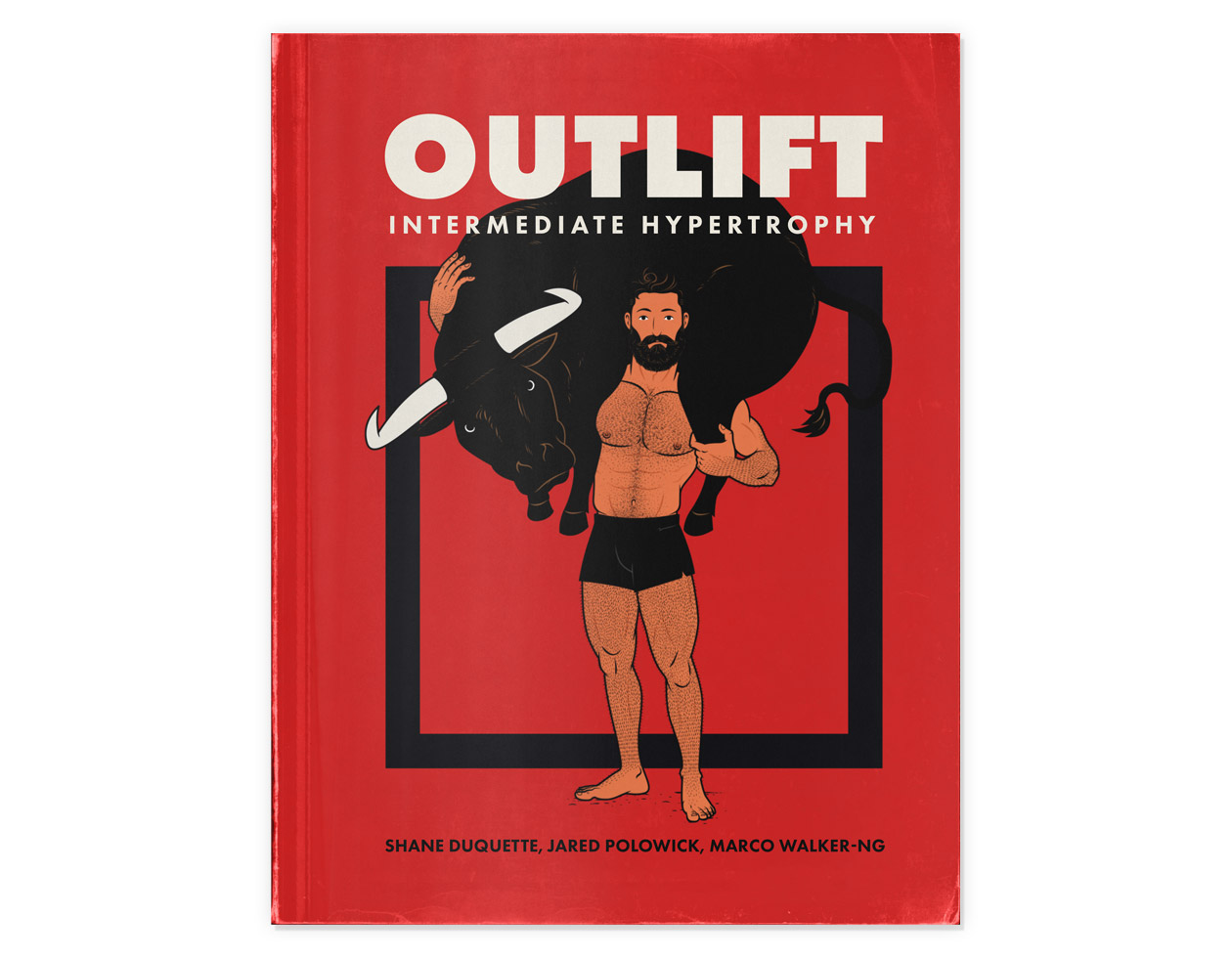
If you’re still skinny or skinny-fat, try our Bony to Beastly (men’s) program or Bony to Bombshell (women’s) program. Or if you’re already an intermediate lifter, check out our customizable Outlift Intermediate Hypertrophy Program. (This program is for men. The women’s version is in the final phase of testing). If you liked this article, you’ll love our full programs.



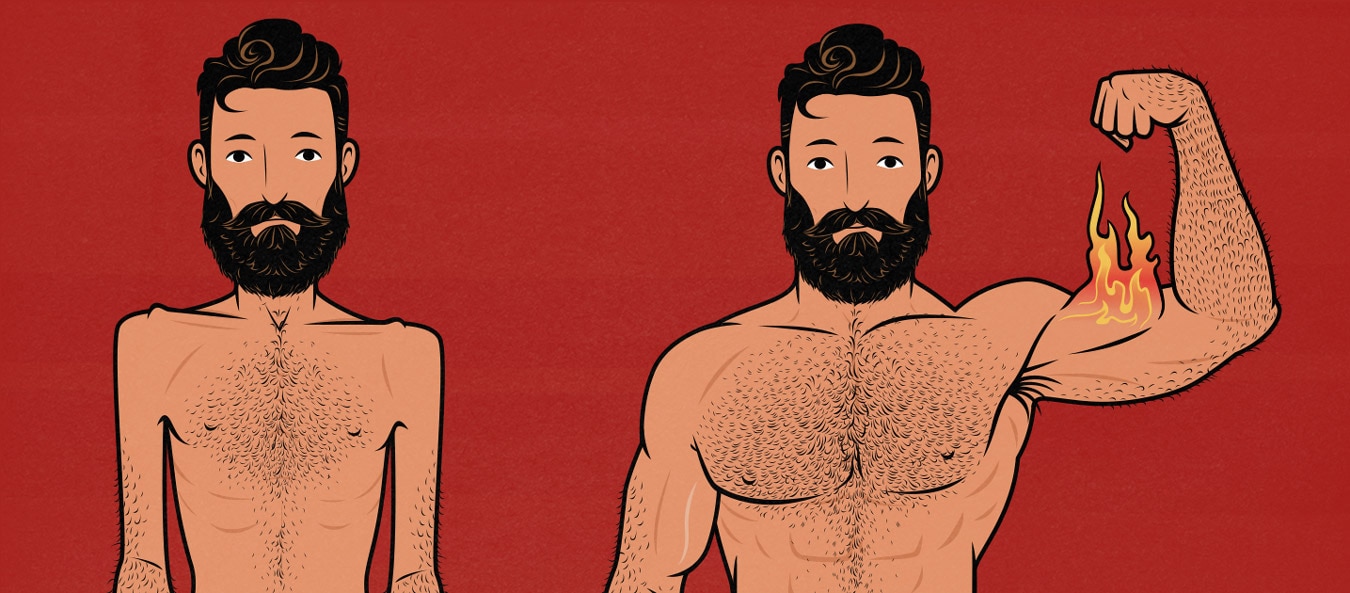
I’ve done this type of program with great success. For example, my bench routine is a 6-week cycle:
Mon and Wed: 75% of 1RM
Week 1: 5 sets of 6. I add 2 reps each following week, so week 6 is 5×8. After completing 5×8, I add weight, typically 5 lbs, and start over at 5×6 and repeat.
Fri: 85% of 1RM
Week 1: 5 sets of 3. I add 1 rep each following week, so week 6 is 5×4. Afterwards, I add 2 or 3 lb, and start over at 5×3.
If I miss a rep for a given week, I’ll repeat the same reps the following week, until I make it, and then I’ll start adding reps or weight again.
In August 2020, my bench was 225lb, in August 2021 was 275lb. Not bad for a 56yo!
Not bad at all, Gary! That’s awesome 😀
Your program sounds great, too. I enjoy that style of intensity-based training very much. Sounds like you’ve got a killer system.
Congrats on hitting 275! That’s a huge milestone. I can count on one hand how many times I’ve seen people benching that much weight in the gym. Super good.
This was a great article, well written and just packed with concise and straightforward information. I’ve bookmarked it and will check back constantly!
Thank you so much, Ken!
Thank you for another article! Your articles inspired me to totally change my approach to fitness about 1.5 years ago. I went from being underweight and struggling to even maneuver the 45lb bar to being 125lbs at 5’6″ and squatting, deadlifting, and hip thrusting 125-130lbs.
I’ve been plateauing hard though! I think with this article, I know how to approach breaking through my plateau. You mention gaining weight to gain muscle mass and strength, which I took to heart over the past year. But shouldn’t a 125lb woman be able to do more than what I’m doing? Can I still make good progress without gaining more weight with the other techniques mentioned?
I don’t care about the actual number on the scale, but I wasn’t able to maintain my body-fat % when I gained weight, so I now have a bit of fat on my stomach and legs, and cellulite on my thighs. I don’t really want to gain any more weight/fat (although I do have a butt and nice arms now).
Thank you, Josette! Congratulations on your muscle and strength gains, butt, and arms! That’s awesome 😀
Since you aren’t that lean, you can probably lose fat while building muscle if you continue progressively overloading your lifts, eating enough protein, and trying to sleep well at night. The process can be slow and finicky, but it can work. Plus, you’ll probably tend to eat a bit less one week, losing a tidbit of fat, then eat a bit more the next week, gaining an itty-bitty-bit of muscle. Over time, your strength and body composition can improve at the same weight.
If you’re fatter than you’d like to be, though, the fastest way to get rid of the extra fat is to “cut”—to intentionally lose a little bit of weight each week. You’d fight to maintain (or make slight gains) in your muscle size and strength, but even just maintaining most of your muscle and strength would be great. (You’ll lose some fluids and glycogen and stuff, so slight, temporary drops in performance are normal.) Maybe you lose 0.5–1 pound per week. In a couple of months, you’ll be noticeably much leaner. From there, you can start slowly gaining weight and building muscle again.
Should a 125-pound woman be stronger than you? I don’t know. You sound pretty strong to me! Especially if that’s how much you’re lifting for multiple repetitions while using a large range of motion. But I doubt you’re at your genetic potential. If you want to keep getting stronger, I think you can continue to gain much more muscle mass and strength 😀
Thank you for the advice and encouragement! And thanks again for the great work you all do on these articles! I’m sure it takes a lot of time and research. I’ve only been on the Bony to Bombshell website so I see there is a lot more for me to read here 🙂
My pleasure, Josette! 😀
Bony to Bombshell is for thin women who want to get bigger and stronger. Bony to Beastly is for skinny guys who want to bulk up. Most of the articles here on Outlift are still about gaining muscle size and strength, but they’re written for a more general audience. There’s stuff here that’s not just for men, women, or skinny people. I hope you like it!
Very informative article! I’d like to know how to modify squats, lunges etc for strengthening legs and glutes, or what you suggest if your knees get sore or for someone who has bad knees in general?
Hey Lisa! I’m Marco from Outlift.
Some modifications you could do would be to do things like goblet squats and front squats instead of back squats. By keeping the weight in the front it can help shift our center of gravity back which can take some pressure off of the knees. Here’s a video tutorial for the goblet squat.
A modification for a lunge would be to instead do a split squat, playing around with what version feels best for you. For example, you could hold onto a power rack while doing a split squat, which would essentially unweight your leg a bit. That may be all you need to start building muscle and strength pain-free. After a while, you would progress with reps, then let go of the rack, and then add weight.
Hip-dominant lifts like Romanian deadlifts, back extensions and hip thrusts can be very helpful for growing the butt and hamstrings (the back of the thighs). Leg curls can also be great for the hamstrings.
For the front of the thighs (quads), step-ups are a good all-around leg exercise that can be adjusted fairly easily. Leg extensions are great for isolating your quads, but you’ll have to see if your knees can handle them.
The next thing is to explore your knee pain. Pain is multifactorial, but you can still do your best to eliminate red flags. And then if that doesn’t work, reaching out to a qualified professional who can help you manage it. Some red flags for knee pain:
Load Management: Pain can happen if you increase stress too quickly. This could be too many sets (volume), too much weight, or not enough rest between workouts.
Exercise Progressions: This is a version of load management, but sometimes you can choose exercises that your body doesn’t tolerate well. If an exercise causes pain, it doesn’t necessarily mean it will be bad forever, just that you might not be ready for it. It can help to start with an easier version of an exercise that allows you to feel your muscles working instead of your joints hurting.
Hip Mobility: sometimes your center of gravity can get pushed forward and lead to some tightness in the hips. If this happens, this can also lead to more stress happening around the knee and less around the hips. You can check this by touching your toes. Can you touch your toes while keeping your knees straight? You can also check this by doing a squat with your feet hip-width apart and pointed straight ahead. Can you squat where your butt touches your heels without your heels lifting or your feet turning out? If you find that you’re tight, doing some warm-ups and mobility drills before squatting might do the trick, especially over time.
Thanks for another great article. I’ve been incorporating your advice into my workouts for a few months as I’ve been cutting. Last time I bulked I got kind of fat so I’ve been thinking about joining one of your programs to learn how to lean bulk effectively. I’ve been lifting for about 4 years so I know the exercises well enough. I’d consider myself skinny-fit now at 5’7 and 145 lbs. Is Outlift the right program?
Hey Adrian, that’s awesome!
We’ve got a free article about how to gain less fat while bulking. Following a structured hypertrophy program is definitely a big part of that, though, and Outlift sounds the perfect choice for someone at your level. That’s exactly why we made it 🙂
Hey Shane, thanks for this article, very informative as always. I’ve been following you for a year now and I’m a big fan.
I have a question on progressive overload. As I understand it, a higher volume should lead to more muscle growth. So why are many programs, including yours, structured in phases where the you go from a higher volume phase (eg 4×10 on an exercise) to a lower volume phase (eg 4×6)?
Hey Fabrizio, that’s a really smart question.
More volume does tend to lead to more growth (to a point). We aren’t known for using high training volumes, though. We usually aim for moderate volumes. I think that gives us a good balance of volume, effort, and recovery. If I had to bet, that’s what I’d guess is best for muscle growth for most people.
We do progressively overload volume within each phase. The first week has a lower volume than the final week. But you’re right about the phase-to-phase progression, kind of.
First, it depends on how you define volume. Volume can refer to the tonnage you lift through a given range of motion. So how much total weight you lift while squatting, say. In that case, yes, 4 sets of 10 repetitions (4×10) is more volume than 4 sets of 6 reps (4×6). But it seems that challenging sets stimulate a similar amount of muscle growth as long as they’re within a moderate rep range (of say 6–20 reps per set). So another definition of volume is “number of challenging sets.” In that case, 4×10 and 4×6 both have 4 challenging sets. Both have the same amount of volume.
Second, there’s an assumption that these programs are done in isolation, but that’s not the goal. We’re assuming you’re going to finish this program and then keep lifting weights. If you begin another program with the same structure, you’ll be going from lighter sets to heavier sets, then back to lighter sets, and so on.
The reason we like to start with lighter weights is that gives people a chance to practice the lifts before loading them up heavy. It also allows people to gradually lift heavier weights as they go through the program. Sometimes the weight increases come from gaining strength. Sometimes the weight increases come from lower rep ranges. It’s a nice way to gradually get stronger.
But there’s no true right answer here. Part of this comes down to personal preference. Part of the reason Marco and I program that way is because we happen to like it. You could do it the other way if you wanted. You could start heavier and gradually add reps, sometimes because you’re getting stronger, and sometimes because you’re lowering the load. Or you could mix a wider variety of rep ranges into each phase, with very little phase-to-phase variation in loading.
So to make a long story short, you could call it a quirk. I think it’s a quirk in so many programs because it works very well. But it’s still a quirk. There are other ways that should be similarly effective.
Can I apply progressive overload to my pull-ups? When is the right time to add weights to my pull-ups set? Thanks!
Yeah, absolutely. Bodyweight exercises need progressive overload, too. With exercises like push-ups and pull-ups, I’d just be more flexible with the rep range you lift in. If you can only do 5 reps, it might be better to work your way up to 15 reps before you worry about loading them heavier. You don’t have to, but it might keep things simpler.
I would keep increasing the reps until it starts to feel like you’re working your conditioning more than your muscles. For me, that’s around 30 reps with push-ups, and around 15 reps with chin-ups and pull-ups. When I can do 15 pull-ups in a row, I start loading them heavier.
There’s nothing wrong with loading them heavier earlier, though! If you prefer doing sets of 8 pull-ups/chin-ups, you can start loading them as soon as you get to 8 reps.
i have been working in my comfort zone and still thinking why no results and now I understood the mistake this article is so helpful to me
When is the right time to add weights to my pull-ups set? Thanks!
You should add weight when you’re doing so many reps that it burns and you hate it. Maybe for you, twelve reps is a nightmare. Or maybe you can work up to doing sets of twenty reps before it becomes a living Hell.
Moderate rep ranges are often more enjoyable than higher ones, especially with bigger lifts that engage more overall muscle mass, such as the chin-up.
As long as you’re doing around 6–20 reps per set, you’ll stimulate a similar amount of muscle growth per set. If you prefer the lower side of the range, add more weight to keep yourself there. If you prefer the higher side, keep adding reps 🙂
Great article on progressive overload! As someone who’s been implementing this principle in my training for years, I can attest to its effectiveness. However, I’m curious to know – how do you suggest modifying progressive overload for individuals with injuries or limitations? Is there a way to still make progress without risking further damage? Thanks for your insights, Outlift!
Thank you so much!
If someone has an injury or limitation, I think it helps to rehab the issue while working around it. So if someone has a bad shoulder, try to rehab it, and then also try to find a way to press that doesn’t aggravate the issue. If that’s going well, I think you can approach progressive overload in a fairly normal way.
If you’re trying to progressively overload an exercise that’s aggravating an injury, it’s probably best to go back to the beginning, trying to find a way to rehab and work around the problem.
If I can’t get a new PR in a given lift, would it be helpful to force the extra reps? For example, say I fail two reps short of my PR, a 15 second break may give me enough recovery time to pump out three more reps. My thought is that while it’s not as good as getting the extra reps naturally, it’s better than accepting a weaker workout.
Hey Justin, good question.
What you’re describing is called a myo-rep, where you take the set close to failure, take a very short break, and then fight for a few more reps. It’s an effective way to stimulate muscle growth. You’d think of it like adding an 0.5–1 set. If you can benefit and recover from the extra stimulation, it can help.
Performance can fluctuate a little bit from workout to workout. That’s normal. But if you notice that you’re getting weaker over time, or that you’re failing to make progress, then you need to adjust something. Sometimes, you can stall from a lack of stimulation. In that case, the myo-rep approach will help. Other times, you’re suffering from a lack of sleep. And then in the case of naturally thinner guys, we often need more food. It’s our lack of weight gain that’s holding us back.
When I’m bulking (as in, actively trying to get bigger and stronger) I like to think that my job THIS workout is to make sure I don’t need to accept a weaker workout NEXT workout. So I give each rep my best effort, work through the entire workout, and then start thinking about food and rest. I know that if I can eat and rest properly, I have a great chance of outlifting myself next time.